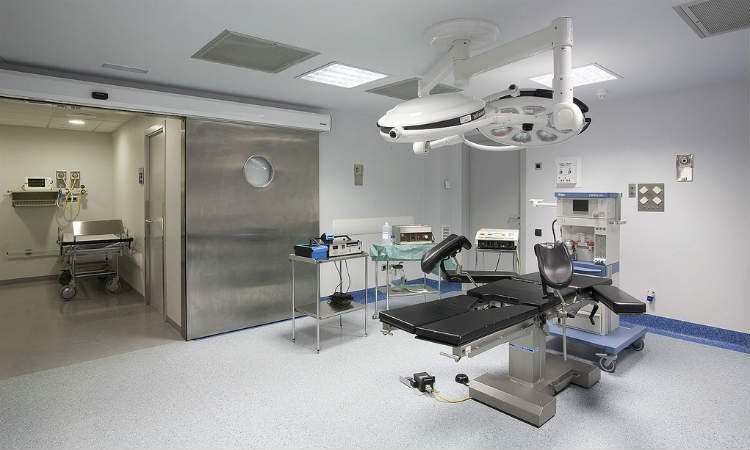Success rates are one of the most critical factors when choosing an IVF center, as they provide an indication of how effective a clinic is in achieving pregnancies and live births. However, interpreting these rates can be challenging. Success rates are influenced by numerous factors, including patient demographics, medical history, and the specific protocols used at each clinic. If you’re looking for an IVF Center In Bihar, understanding what these success rates truly mean can help you make an informed decision and manage your expectations about the IVF process. In this guide, we’ll explore the factors affecting success rates, the ways clinics calculate them, and how to interpret these numbers accurately.
Understanding IVF Success Rates
IVF success rates reflect the percentage of cycles that result in successful pregnancies or live births. These rates are generally calculated based on age, as this is a significant factor in fertility. Clinics often separate their success rates into categories by age groups, as younger patients tend to have higher chances of success due to better egg quality. For instance, success rates for women under 35 may differ greatly from those over 40.
However, success rates are not one-size-fits-all metrics. They are influenced by each patient’s unique circumstances, and different clinics may calculate these rates using slightly different criteria. When looking at an IVF center in Bihar, for example, it’s essential to examine how they calculate their success rates and whether they consider factors that align with your personal fertility profile.
Factors Affecting IVF Success Rates
The success of IVF treatment depends on multiple variables, each contributing differently to overall outcomes. Some of the most influential factors include:
1. Age of the Patient
- Age is one of the most significant predictors of IVF success. Women under 35 typically have a higher chance of success than those over 40. This is due to the natural decline in egg quality and ovarian reserve as women age.
2. Egg and Sperm Quality
- Both egg and sperm quality impact fertilization, embryo development, and ultimately the success of IVF. Poor egg or sperm quality can lead to fewer viable embryos, reducing the chances of a successful pregnancy.
3. Previous Pregnancy History
- Patients who have been pregnant before, especially those with previous live births, may have a higher chance of IVF success than those who have not.
4. Underlying Health Conditions
- Health issues, such as polycystic ovarian syndrome (PCOS), endometriosis, or uterine abnormalities, can affect fertility and the success of IVF. A good IVF center will consider these factors and recommend individualized protocols for each patient.
5. Lifestyle Factors
- Habits such as smoking, excessive alcohol consumption, and obesity can reduce fertility and affect IVF outcomes. A supportive IVF center in Bihar may offer counseling on lifestyle adjustments that can improve your success rates.
6. The Skill and Technology of the IVF Center
- The expertise of the fertility specialists, embryologists, and support staff, as well as the technology used by the IVF center, play crucial roles in determining success rates. Advanced technology, such as blastocyst culture and preimplantation genetic testing, can increase the chances of a successful pregnancy.
Types of IVF Success Rates
When evaluating an IVF center, you’ll come across different types of success rates, each offering insights into different aspects of the treatment process. The most common metrics are:
1. Pregnancy Rate
- This measures the number of IVF cycles that result in a positive pregnancy test. It’s an early indicator of success, but it doesn’t guarantee a full-term pregnancy or live birth. A high pregnancy rate can be encouraging, but it’s essential to look further into the clinic’s live birth rate as well.
2. Clinical Pregnancy Rate
- This metric counts only those pregnancies confirmed via ultrasound and indicates a better likelihood of a healthy pregnancy. Clinical pregnancy rates are often more accurate indicators of success than basic pregnancy rates.
3. Live Birth Rate
- The live birth rate measures the number of cycles that lead to a successful birth. This is one of the most important metrics when assessing an IVF center, as it reflects the ultimate goal of a healthy child. If you’re comparing IVF centers in Bihar, prioritize live birth rates over pregnancy rates to get a clearer picture of actual success.
4. Cumulative Success Rate
- Some IVF centers provide cumulative success rates, which combine the outcomes of multiple cycles. This is particularly helpful for understanding your overall chances if you plan to undergo more than one IVF cycle, as success often increases with repeated attempts.
How to Interpret IVF Success Rates
When looking at an IVF center’s success rates, it’s crucial to interpret them in the context of your unique fertility profile. Here are some tips to help you make sense of these numbers:
1. Understand Age-Specific Success Rates
- Look at success rates relevant to your age group. Success rates can vary dramatically across age groups, and knowing your category’s likelihood can set realistic expectations.
2. Consider the Center’s Specialization
- Some IVF centers specialize in treating specific conditions, such as male factor infertility or advanced maternal age. If you have specific fertility challenges, seek an IVF center in Bihar that specializes in these areas and has proven success in similar cases.
3. Evaluate the Number of Cases Treated
- Success rates can be skewed if based on a small number of cases. IVF centers that handle a larger volume of cases usually provide more reliable data. A clinic with consistently high success rates across a large number of patients is likely more reputable.
4. Look for Transparency in Reporting
- The best IVF centers are transparent about their success rates and explain their metrics clearly. If a clinic provides incomplete information or seems evasive when discussing rates, it may be a red flag. A trustworthy IVF center in Bihar will be open about its success rates and provide detailed explanations of how they are calculated.
Why Success Rates Are Not the Only Factor to Consider
While success rates are important, they are not the only factor to consider when choosing an IVF center. A high success rate may be appealing, but it’s equally essential to assess the clinic’s approach to patient care, technology, and ethical standards. Consider the following as well:
- Patient Experience and Support: Look for centers that offer comprehensive emotional support and have a patient-centered approach.
- Transparency in Costs: IVF can be expensive, and the right IVF center should provide a clear breakdown of costs. An IVF center in Bihar may offer financial counseling or payment plans to make treatment more affordable.
- Advanced Technology and Innovation: IVF centers with state-of-the-art labs, advanced embryo culture techniques, and genetic testing options are more likely to have high success rates and offer a smoother experience.
Also Read: Ovary Meaning In Hindi
Conclusion:
IVF center success rates are an essential factor in selecting a fertility clinic, as they give insight into the clinic’s effectiveness in achieving pregnancies and live births. However, interpreting these rates requires an understanding of age-related data, individual health factors, and the unique approach of each clinic. When looking for an IVF center in Bihar, prioritize transparency and look for centers with high live birth rates in your age group or fertility profile.
Success rates provide useful guidance, but the right IVF center should also offer personalized care, advanced technology, and patient-centered support. By carefully evaluating these aspects, you can select a center that aligns with your needs and gives you the best chance of a successful outcome on your fertility journey.
















Leave a Reply